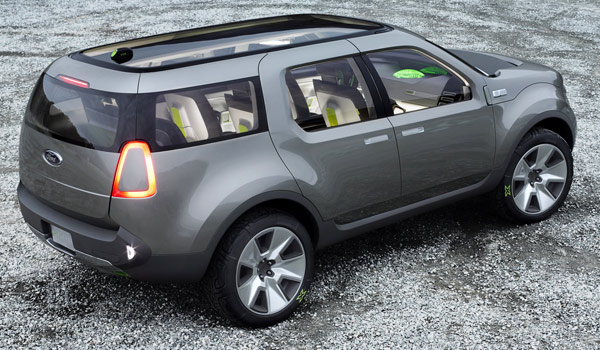 Europe is taking the lead when it comes to being more environmentally responsible with its new cars, working on lower emissions and higher horsepower. Of the American car makers, Ford has been the most proactive in the chase for greener vehicles, with cars like the Ford EcoBoost, which has been the buzz maker since early in 2008. The race to be green is on, and it will be interesting to see who gets to the top of the heap first.
Europe is taking the lead when it comes to being more environmentally responsible with its new cars, working on lower emissions and higher horsepower. Of the American car makers, Ford has been the most proactive in the chase for greener vehicles, with cars like the Ford EcoBoost, which has been the buzz maker since early in 2008. The race to be green is on, and it will be interesting to see who gets to the top of the heap first.
Electric, diesel, biodiesel, hydrogen, natural gas—even restaurant grease. Scientists, engineers, physicists; even chemists are all working overtime to spare the air and find alternative fuels that won’t clog the air and ruin our lungs. There hasn’t been a technological race since the 60’s when we were fighting against the USSR to put a man on the moon!
Europe is debating or not whether to cut carbon emissions from vehicles but simply when to do it and by how much. The average new car on Europe’s roads now emits roughly 160 grams of carbon dioxide per kilometer; the European Commission proposed last year to lower that to 130 g/km by 2012. But Europe’s car makers seem likely to have missed a voluntary 2008 target of 140 g/km.
This issue has pitted French and Italian car makers, which both specialize in small, fuel-efficient cars—against German manufacturers, who could see many of their luxury and sports-car products become problematic. The Germans are into the high-tech innovations, but they’re not as worried about emissions, it seems. Now a staggered set of weight-based limits may be instituted, and the deadline may be pushed all the way to 2015. This will affect the European car makers market on many different levels.
Carbon emissions are becoming a standard automotive benchmark in Europe and parts of Asia, but North American car buyers remain almost entirely unaware of them. To reflect the global discussion, IEEE Spectrum has included whatever numbers on vehicle CO2 emissions we could obtain from the manufacturers.
Many of this year’s innovations center on combustion-engine technology—Ford’s EcoBoost turbocharged gasoline direct-injection engines, Mazda’s tiny Miller-cycle engine, BMW’s centrally mounted twin turbochargers. Then there’s the diesel engine, which appears set for a revival following the fuel-economy regulations enacted late last year in the United States. Both European and Japanese car makers are preparing to launch diesels in North America over the next two to five years. Even though the engine requires elaborate and costly emissions controls—like the Mercedes-Benz BlueTEC system—to trap the great number of fine particulates diesels emit, their lower fuel usage and CO2 emissions are unquestioned.
Will U.S. buyers go for diesels? No one knows. It may be the industry’s biggest open question.
The plug-in hybrid electric vehicle is another puzzle. General Motors is expressing quiet confidence that lithium-ion batteries will clear the various hurdles needed for a late-2010 launch of its Chevrolet Volt extended-range electric car, projected to have a 64-km range on electric power alone. A plug-in version of GM’s Saturn Vue Two-Mode Hybrid sport utility is due on roughly the same schedule, with a 16-km range. Toyota, meanwhile, abruptly changed its tune on plug-ins, launching a test fleet of Priuses converted to plug-in operation. It’s a conversion that private customers have been ordering, one car at a time, at small garages across the United States and in other countries.
The trend extends even to China, where horrific air pollution and increasing dependence on imported oil threaten to muffle the country’s economic boom. BYD Co., a Chinese battery company that claims to supply two-thirds of the world’s nickel-cadmium batteries and 30 percent of its lithium-ion mobile-phone batteries, started making cars in 2002. In January it demonstrated a plug-in hybrid sedan with a claimed electric range of 96 km, which the company said would be offered for sale in small numbers—in China only—by the end of this year. That said, fewer than 200 plug-in hybrid cars are on the world’s roads.
Finally, the industry is doing something about the weight of its products. Ford’s EcoBoost V6 engine, for example, provides the power and torque of a much larger V8 with better fuel economy, lower emissions, and less weight. Even so, a fully accessorized EcoBoost weighs about half as much as an entire Tata Nano, from India, which at US $2500 is cheaper than the options packages for many cars. That low price, and planned production in the millions, make the Nano easily the most important launch of the year. It is feared by the global auto industry and eagerly awaited by millions of Indian families, who now often travel in groups of four or five on a single scooter.


Leave a Reply